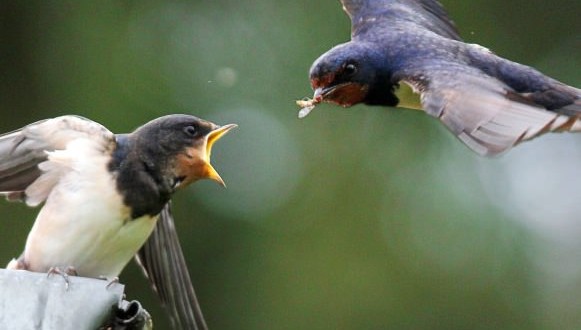A STUDY out of the Netherlands has found a correlation between declines in farmland bird populations and use of neonicotinoid pesticides.
The analysis, reported in the journal Nature indicates that pesticide use may reduce the amount of prey available to birds, and suggests that neonicotinoids pose an even greater risk to wildlife than previously anticipated.
Nature reports although recent studies have drawn links between the use of neonicotinoid pesticides and the decline of non-target species, such as pollinating insects, neonicotinoids are thought to be less harmful to mammals and birds than to insects.
Caspar Hallmann, an ecologist from Radboud University in Nijmegen, said there was a strong and statistically significant link between levels of imidacloprid found in surface waters and the reported sightings of various bird species, such as warblers, skylarks and mistle thrushes, compiled annually by Dutch ornithologists.
“We found an alarming trend between areas where the neonicotinoid is in the surface waters of The Netherlands and how birds respond to that,” Dr Hallmann said.
“At imidacloprid concentrations of more than 20 nanograms per litre, bird populations tend to decline by 3.5 per cent on average each year. This means that within 10 years you’d expect 30 per cent of the population to decline,” he said.
“This is definitely not proof of causation. However, there is a line of evidence building up suggesting that something is going on here. We know insects have declined in these areas and that insects are an important food for these birds,” Dr Hallmann added.
Last month, a separate group of researchers analysed hundreds of published studies on “neonics” and found that they were linked with the decline of a wide range of wildlife – from honeybees to earthworms and butterflies – that were not the targeted pests of the insecticides.
The latest study, published in the journal Nature, is new research that attempted to analyse the variations in the populations of a wide variety of bird species in different areas of the Netherlands, both before and after the introduction of imidacloprid in 1995.
“We looked very thoroughly for other factors that might relate to these birds’ decline. Our analysis shows that, based on our data, imidacloprid was by far the best explanatory factor for differences in the trends between the areas,” said Professor Hans de Kroon of Sovon, the Dutch Centre for Field Ornithology, who supervised the research.
“Neonicotinoids were always regarded as selective toxins. But our results suggest that they may affect the entire ecosystem. This study shows how important it is to have good sets of field data, and to analyse them rigorously,” Professor de Kroon said.
The researchers failed to find a comparable decline in birds prior to the introduction of imidacloprid and were not able to link the declines in birds to changes in farming methods or land use.
They believe the most likely explanation is that neonicotinoids are causing food shortages for insect-eating birds, particularly when they are feeding their young.
“We could not see the same pattern of decline before the introduction of imidacloprid – we found a completely different pattern. We also looked at land use changes but they could not explain it,” Dr Hallmann said.
“We are starting to see an alarming trend that should now be taken into account by policy makers considering what to do about neonicotinoids,” he said.
The EU has introduced a two year moratorium on certain uses of neonicotinoids, designed to limit the exposure of bees to flowing crops. However, insecticides can still be used as a seed dressing, which means that they will still be leached into surface waters, according to Professor Dave Goulson of Sussex University.
Professor Charles Godfray of Oxford University, who chairs the Department for the Environment’s Pollinator Expert Advisory Group, said: “The strength of this work is that it brings together for the first time datasets on bird populations and neonicotinoid concentrations in the environment to ask very important questions.”
However, Professor Godfray said that it is important to conduct large-scale field experiments on farmland to get much harder data on the effects of neonicotinoids on wildlife.
Raimund Grau, a senior toxicologist at Bayer CropScience, said that the study is biased and implausible: “The basis for the correlation of ‘concentration in water’ leading to ‘decline in food resource, as the investigated species live on emerging insects’ is not substantiated.”
Agencies/Canadajournal

 Canada Journal – News of the World Articles and videos to bring you the biggest Canadian news stories from across the country every day
Canada Journal – News of the World Articles and videos to bring you the biggest Canadian news stories from across the country every day

